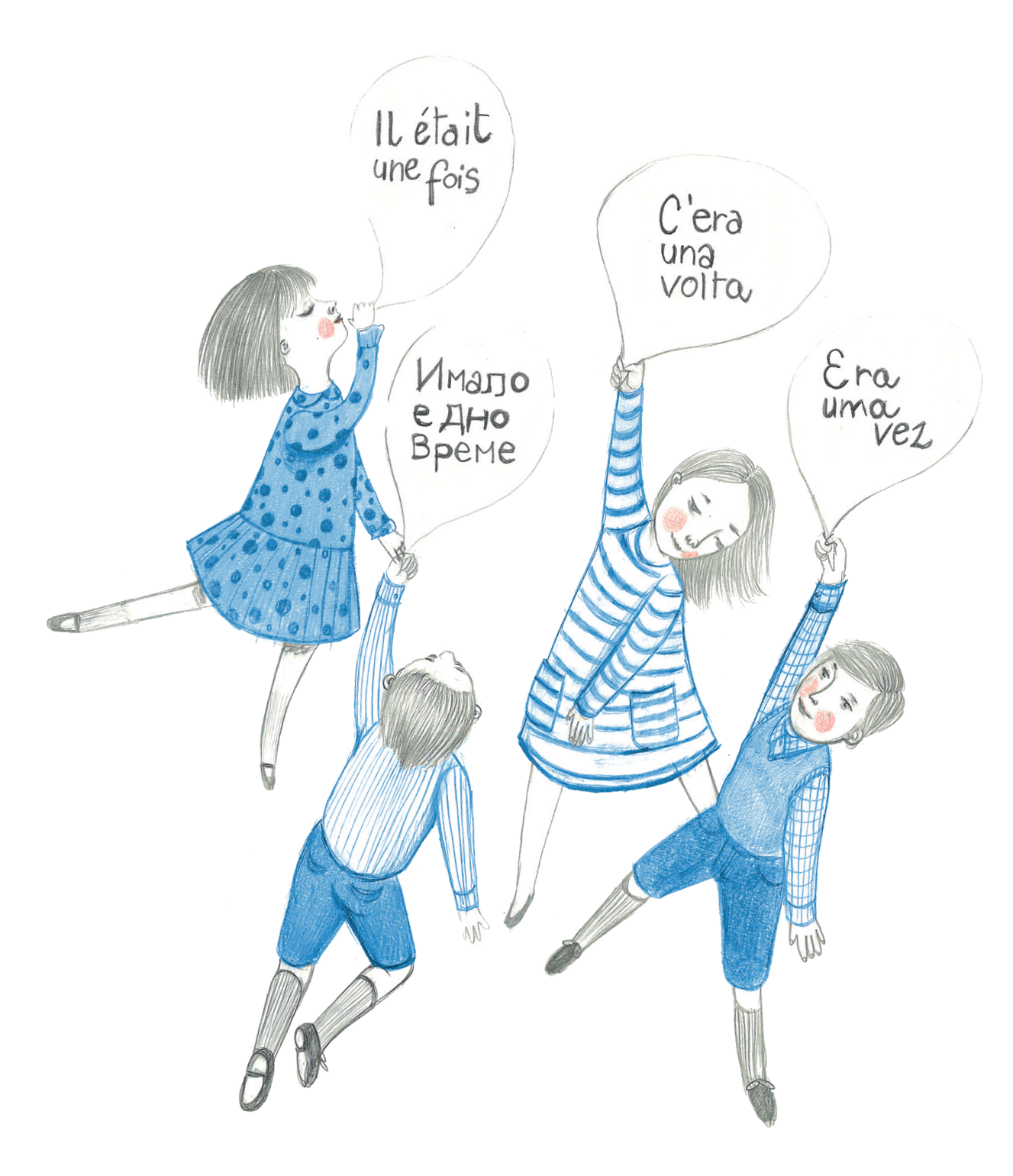PRACTICAL GUIDE
Storytelling at school
to master the art of speech
Guide Introduction
How to tell stories at school?
What stories can be used?
What would be the benefits?

Looking for the booklet version of this guide to read offline or print ?
The Project
Oral proficiency is the foundation of all learning:
Before learning how to read and write, children must learn how to speak
The situation in the European Union
According to the OECD’s Programme for International Student Assessment (PISA), French, Italian, Portuguese and Belgian students perform at a worrying level in reading literacy at the end of primary school. More than 20% of them are unable to identify the main idea in a medium-length text, to find information, to analyse and reflect on a text, while Bulgarian students are at 47%.
In class, teachers note a lack of understanding of texts, difficulty in reading aloud, in expressing themselves orally and in writing, in articulating ideas with each other, etc.
France and Belgium are among the countries where the link between socio-economic background and student performance is strongest.
– in contrast to the United Kingdom, where the spoken word is at least as important as the written word, and where every day, from the age of five, students are encouraged to speak in front of the class.
It is questionable whether there is a correlation between the frequency of oral practice from an early age and performance in reading comprehension.
In Seeds of Tellers, Portugal is the country where the gap between advantaged and disadvantaged pupils is the smallest. However, in Portuguese school curricula, orality is very present. The aim is to enable pupils ‘not only to understand speech, but also to express themselves in an appropriate way (clearly, audibly, according to the context), developing discursive skills such as storytelling’. Portuguese teachers and pupils tell stories, riddles, legends from the oral heritage, sometimes by heart (written text), sometimes more freely.
In Bulgaria, even though tales strongly permeate popular culture, the written form is favoured in schools, while oral transmission is maintained among certain categories of the population. In all the other countries of the partnership, the dominance of the written word has been at the heart of teaching practices for centuries. Oral exercises in schools are almost always directed from the pupil to the teacher. Rote memorisation is often used, along with recitation. Presentations are prepared as written texts; so are oral examinations: in these schools, the spoken word is just a derivative of the written word.
But it seems that the topic of oral communication tends to gain renewed importance when school systems undergo periods of crisis. Things are changing: in Italy, pupils are to have a multidisciplinary oral interview on the subjects that they are studying starting this year. In France, the Grand Oral in Terminale (last year of secondary school) and the eloquence test for the brevet des collèges (at the end of middle school) have been introduced. The National Education curriculum states, for cycle 2 (6 to 8 year olds), that ‘the teacher shall ensure the relevance and quality of the pupils’ oral language on all occasions’, without however giving any further methods or guidelines. French teacher training now takes into account oral communication and encourages teachers to practise their oral skills.
Promoting speaking opportunities
This may seem obvious, but for children to speak, they must be given a chance to speak, and opportunities to speak must be promoted. This is why this method is different from what is usually practiced in schools, and can be surprising: no recitation or rote memorisation here, they have the right to speak, and they have the right to make mistakes!
The goal is to encourage each pupil to speak up and give them a framework in which to do so. To do this, it is necessary to create an atmosphere of benevolent listening. The child’s confidence to speak depends on how the extent to which they feel that they are are being listened to. We must create the conditions that allow each child to take risks and challenges themselves in public speaking, so that they can feel the pleasure and pride of seeing their efforts pay off.
To this end, each child should have the right to try as many times as necessary, from one session to the next. They will understand that it is normal to experiment. Mistakes here have a constructive value. Similarly, repetition is not negative in any way. (It takes about 2000 unsuccessful attempts for a baby to actually start walking!). Stories will be shared and practiced on an exclusively oral basis, without the support of written texts This will allow children to avoid any difficulties related to reading and understanding a text and to avoid reciting it by heart.
Limit the psychopedagogical approach
The richness of the symbolic content in tales is such that they naturally lend themselves to analysis and interpretation, and are not limited to a single interpretation. These aspects may be of interest to the teacher, but it is not necessary to know them to tell a story. Tales are stories with deep and hidden meanings, symbolic images that reflect the problems we face from a young age, and it is good to let everyone grasp them in their own way.
Explaining the message of a story is like imposing a reading. Remaining simple and communicative in the pleasure of telling a story is enough to transmit it; it leaves space for the listener who will be able to connect to it all the better by creating their own mental images, according to their own personality, sensitivity, emotions, experience.
Duration
It is ideally a long-term project: throughout a whole school year, if possible; or for a few months. Every week, a fixed time slot will be dedicated to it: same day, same place, and same time. It should become a regular chance for students to encounter the art of speech through tales and other stories.
